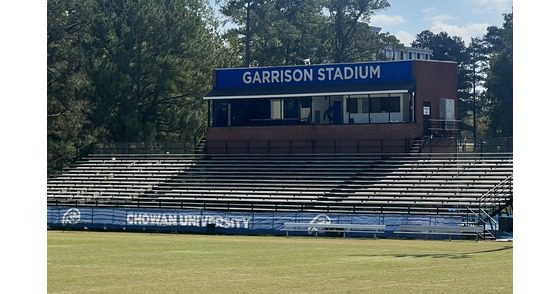Granville County author and historian Lewis Bowling knows a thing or two about Duke University’s rich athletic history. Not only has he been a fan of the Blue Devils all of his life, he has also written two books, Wallace Wade: Championship Years at Alabama and Duke in 2012 and Duke Basketball: A Pictorial History in 2014. Bowling has also taught sports history and is a staff writer for Go Duke The Magazine.
He remembers being able to walk up to the box office at Cameron Indoor Stadium 15 minutes before tip off and to purchase a ticket, something you could not do today. Bowling says, “I like to remind people that Duke basketball has a rich history before Coach K.” He cited contributions from many earlier Duke basketball coaches for establishing that history beginning with Wilbur “Cap” Card who was the first coach in 1905 when Duke was still known as Trinity College. That first team also featured Thad Stem Sr., father of the well known author Thad Stem Jr., as the team’s very first captain. Stem Sr. would go on to become a prominent lawyer and mayor of Oxford.
In the 1920’s Eddie Cameron took over the Blue Devils, and he coached until the 1940’s. Cameron Indoor Stadium is named for Cameron, who also coached football at the school in the early to mid 40’s. “He didn’t get the recognition he deserved,” Bowling says. This is in spite of the fact his name is on Duke’s basketball arena. “Cameron isn’t remembered for the various contributions over the years,” Bowling continued.
Bowling credits Bill Foster for bringing Duke basketball back to prominence in the late 1970’s and feels the team will be in good hands when Mike Krzyzewski steps down after the upcoming season. Assistant coach Jon Shyer will take over, and Bowling says he will add to the Duke basketball tradition.
Bowling says Duke football is equally deep in tradition. Wallace Wade had won three national championships at Alabama when he was offered the job at Duke for the 1931 season. “He shocked the nation by taking the job,” Bowling said. Duke was not known as a football school at the time. Wade led the team to two Rose Bowls. The first, in 1939, saw a Duke team that had not been scored on the entire year and was undefeated lose to Southern California 7 – 3. Duke would return to the Rose Bowl in 1942 and would also come up short as the undefeated Blue Devils lost 20 -16 to Oregon State. The game was moved to Durham that year due to World War II. Wade would join the military in 1942 and turn the program over to Eddie Cameron who coached the team until Wade returned from military duty in 1945. Wade would remain until 1950. Duke’s football stadium is named for Wade.
Wade’s successor was Bill Murray, who was hand picked by Wade. Murray led the team to a Cotton Bowl victory in 1961 and would coach the team through the 1965 season. Bowling said that between 1931 and 1965 Duke’s won-lost record was as good as any team in the country.
Bowling said the Duke football program began to slip after 1965 and would struggle for over 20 years to return to prominence. In 1987 Steve Spurrier took over as head coach and turned the program around. Bowling says the football program is currently in great hands with David Cutcliffe and despite only winning three games last year should be a much stronger team this year. Bowling says Cutcliffe keeps a bust of Wallace Wade in his office and late at night Cutcliffe can almost hear Wade talking to him.
Bowling’s two books on the history of Duke athletics can be purchased at Amazon.
For complete details and audio click play.
















